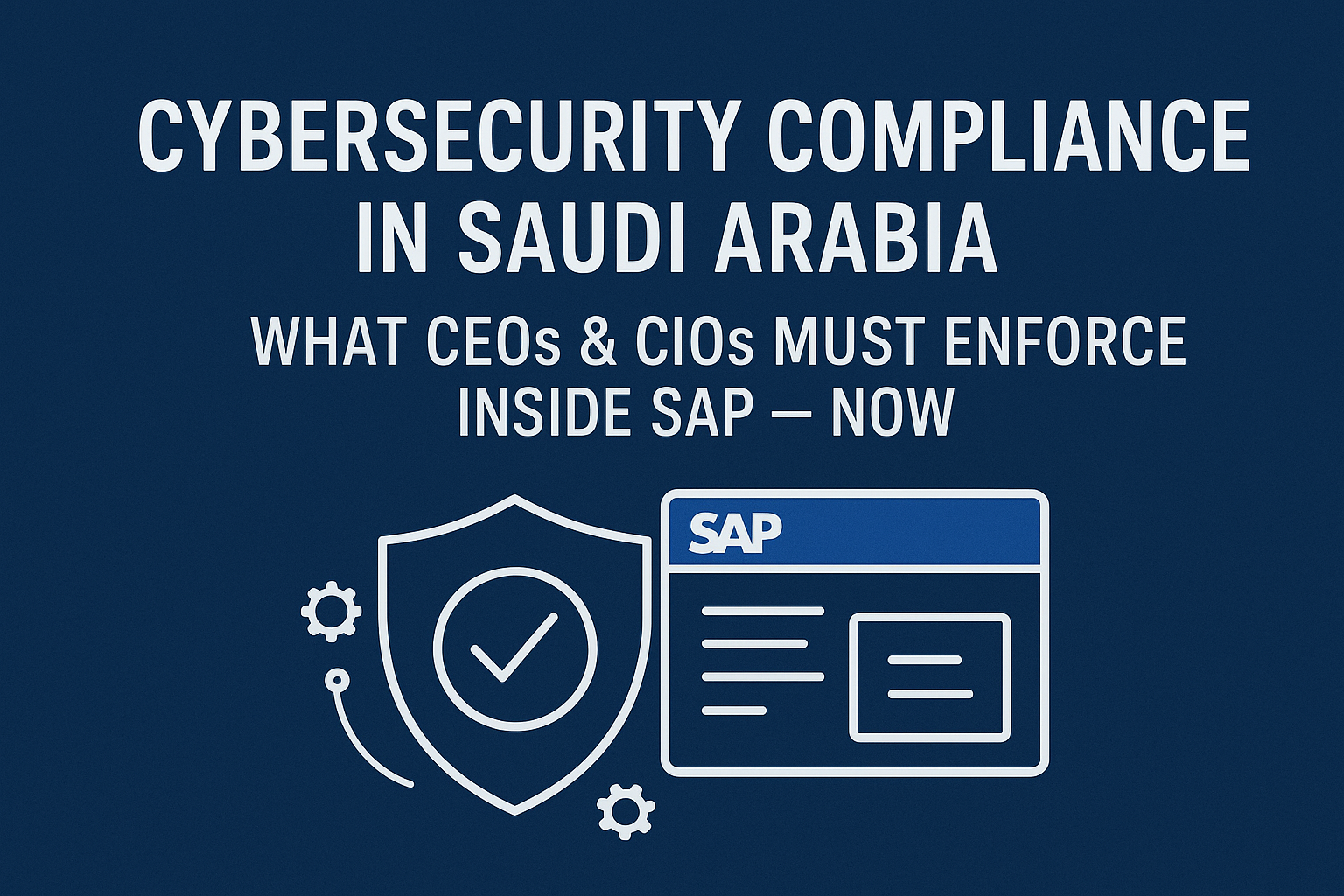Nightmares about upcoming audits are a shared experience for anyone responsible for SAP system security and access controls. There are few challenges as nerve-wracking as the possibility of audit findings exposing gaps or vulnerabilities in business-critical environments. For those working with SAP, maintaining regulatory compliance and a robust security posture is not an optional exercise—it’s a requirement that ranges from legal pressure in the context of regulations like GDPR or SOX, to the very practical need of protecting sensitive data and business processes. This article explores proven strategies and advanced methods for optimizing SAP access management and audit readiness so that organizations can rest easier, knowing their systems are secure, compliant and ready to stand up to scrutiny.
The Role of SAP Audit in Organizational Resilience
SAP Audit is not just a checklist exercise. It serves as a fundamental process for uncovering hidden risks and inefficiencies in an organization’s SAP landscape. Effective SAP audit strategies reveal weaknesses in access management, highlight instances of Segregation of Duties (SoD) conflicts and expose unnecessary system privileges that attackers or even insiders could exploit. A properly executed SAP audit wields the dual benefit of satisfying compliance requirements while strengthening operational resilience. By leveraging comprehensive SAP Audit methodologies, organizations are empowered to address auditor concerns, avoid damaging findings and pinpoint areas that require immediate attention. This cycle of continuous improvement not only placates regulators or board members but also supports the broader business objective of sustaining trust with customers and partners.
Managing Complexity: The Puzzle of SAP Authorization
Few professionals would contest that SAP authorization management is among the most complex administrative tasks in large organizations. Given the massive size of SAP user landscapes and the variety of modules and transactions involved, the risk of permission creep—where users accumulate access beyond their need—looms large. Without disciplined authorization review processes, companies risk both operational inefficiencies and regulatory sanctions. An expert approach to SAP access management demands continuous monitoring, role-based access control (RBAC) frameworks and clear documentation to support each access decision. Implementing structured SAP Audit practices can unveil anomalies in authorization assignments, enable rapid course corrections and prevent disruptive incidents that can lead to costly downtime or public relations setbacks.
Segregation of Duties (SoD) and Critical Access Risks
The principal concept behind robust SAP controls is that no single user should have access to all the critical steps in any critical business process. SoD is a foundational component of most audit frameworks as it directly relates to the potential for fraud and error within SAP environments. SAP Audit processes include systematic checks to identify SoD conflicts—for example, a user with both purchase order creation and approval rights. Beyond SoD, auditors examine critical access rights such as those associated with system administrators, interface users or third-party integrations. The identification and remediation of such conflicts require expert analysis, practical business understanding and advanced tooling to automate detection where feasible. These approaches not only reduce the risk of fraud or mistake but also provide documented evidence that companies are proactively managing the risks auditors most often target.
Preparing for Regulatory Compliance: GDPR, SOX and Beyond
Strict regulatory requirements form the backdrop of modern SAP audit activity. Demonstrating compliance with frameworks like GDPR, SOX or ISO 27001 means not only having technical controls in place but also proving their effectiveness to external auditors. Organizations must show that access to personal data is tightly controlled and that processes exist to regularly test and improve these safeguards. A reliable SAP Audit will analyze the handling of user data, the structure and effectiveness of access reviews and the automation or manual steps set up for managing periodic access recertification. This thorough review process ensures that companies can respond effectively to any regulator inquiry, avoiding both legal risks and reputational damage. By embedding compliance considerations into the access management lifecycle, businesses remain poised to keep up with ever-changing legislative requirements.
Leveraging Automation and Continuous Monitoring in SAP Audits
Traditional audit approaches often relied on periodic spot checks or manual reviews that could leave significant gaps between audit cycles. With the scale and complexity of SAP landscapes today, manual processes are simply not sufficient. Organizations that embed automation into their SAP Audit processes achieve greater scalability, accuracy and transparency. Continuous monitoring tools allow businesses to identify unauthorized changes, access anomalies or policy violations in real time. Automation can also simplify the process of identifying orphaned accounts, excessive permissions and changes outside of approved workflows. This real-time feedback loop equips security administrators to intervene before a problem escalates, while audit teams gain access to reliable evidence when preparing for internal or external reviews. Automation enhances accountability and efficiency, which reduces both operational headaches and security risks.
Supporting Audit Success with Clear Documentation and Reporting
One hallmark of an effective SAP Audit strategy is comprehensive and accessible documentation. Audit trails should provide a clear, chronological log of access requests, approvals, modifications and reviews. This documentation acts as the first line of defense during any audit process, allowing stakeholders to answer auditor queries quickly and with confidence. Additionally, regular reporting—tailored to the needs of IT, compliance and operations teams—creates common awareness of the organization’s security posture and any potential risks or deficiencies. Supporting the audit trail with clear risk assessments, summarized insights and recommended corrective actions further increases audit readiness. Ultimately, transparent documentation and reporting enable teams to demonstrate control over their SAP environments, assuring both auditors and internal leadership of effective access management practices.
Audit season does not need to be a source of dread for SAP security managers or IT leaders. By adopting targeted SAP Audit techniques and maintaining good access hygiene, many common pain points can be alleviated. Start with a periodic and proactive review of user and role assignments to ensure permissions remain aligned with business needs. Use SoD checks to spot risky combinations of access and implement controls, such as workflow approvals, to limit high-risk changes. Apply the principle of least privilege consistently, leveraging role templates for efficiency and accuracy. Consider automation wherever practical, both in monitoring and reporting. Cultivate a security-aware culture by training users to recognize the importance of compliant system use. By prioritizing these practices, organizations can approach each audit cycle with far more confidence—resisting audit fears firmly and systematically.





